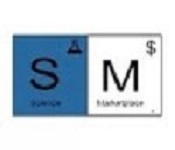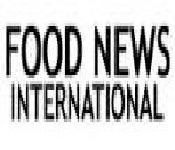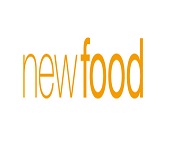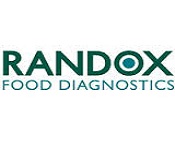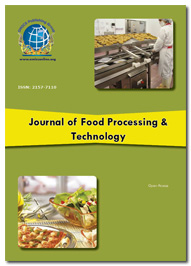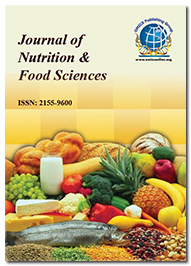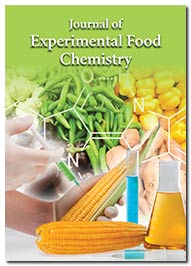Theme: Food Science Research and Advancement
Food Processing 2016

10th Global Summit on Food Processing & Technology to be held in San Antonio, USA with the theme of Food Science Research and Advancement. Global Food Processing Summit 2016 is going to help the people who are directly or indirectly related to the Food processing industry and academia. By this conference people can share their views and ideas and can improve their knowledge about the advanced techniques to increase the productivity of the industries.
Track 1: Food Processing & Engineering
Food processing is the conversion of raw ingredients, by physical or chemical means into food, or of food into other forms. Food processing combines raw food ingredients to produce marketable food products that can be easily prepared and served by the consumer. Emerging technologies which have already found in the food industry or related sector are High pressure processing , pulsed electric fields, ultrasound , and cold plasma .The basic principles of these technologies as well as the state of the art concerning their impact on biological cells, enzymes, and food constituents. Current and potential applications will be discussed, focusing on process-structure-function relationships, as well as recent advances in the process development.
Food engineering is a multidisciplinary field of applied physical sciences which combines science, microbiology, and engineering education for food and related industries. Food engineering includes, but is not limited to, the application of agricultural engineering, mechanical engineering and chemical engineering principles to food materials. Food engineers provide the technological knowledge transfer essential to the cost-effective production and commercialization of food products and services. Physics, chemistry, and mathematics are fundamental to understanding and engineering products and operations in the food industry
Food engineering encompasses a wide range of activities. Food engineers are employed in food processing, food machinery, packaging, ingredient manufacturing, instrumentation, and control. Firms that design and build food processing plants, consulting firms, government agencies, pharmaceutical companies, and health-care firms also employ food engineers. Specific food engineering activities include:
· drug/food products;
· design and installation of food/biological/pharmaceutical production processes;
· design and operation of environmentally responsible waste treatment systems;
· Marketing and technical support for manufacturing plants.
Related Conferences to Food Processing & Engineering:
Conference on Food Security, January 7-8, 2016 Singapore; The Consumer Goods Forum – Global Food Safety Conference, February 29 - March 3, 2016 Berlin, Germany; 4th International ISEKI (European Association for Integrating Food Science and Engineering Knowledge Into the Food Chains) Food Conference, July 6-8, 2016 Vienna, Austria; International Conference on Food Studies - A Common Ground Conference, October 12-13, 2016 Berkeley, CA; XV International Conference on Food Science and Biotechnology October 4-5, 2017 Lisbon, Portugal; Conference on Food safety and Regulatory Measures ‘during June 06-08, 2016 at London, UK; European Food Safety and Standards to be held during October 24-26, 2016 at Valencia, Spain; International Conference on Food Microbiology August 08-10, 2016 at Birmingham, UK; Global Conference on Food Safety , December 05-07, 2016 San Antonio, USA; Conference on Food Chemistry and Hydrocolloids August 04-05, 2016 Toronto, Canada.
Related societies on Food Processing & Engineering:
Food Processing Suppliers Association USA. Midwest Food Processors Association, USA. Canadian association for food studies ,Canada. American Cheese Society, USA. American Frozen Food Institute, USA. American Mushroom Institute, USA. Australian Food and Grocery Council, Australia. Assured Food Standards, USA. California Avocado Society, USA. Natural Products Association, USA. Specialty Food Association, USA.
Track 2: Food Biotechnology & Nutrition
Biotechnology has a long history of use in food production and processing. For ten thousand years fermentation, a form of biotechnology has been used to produce wine, beer and bread. Selective breeding of animals such as horses and dogs has been going on for centuries. Selective breeding of essential foods such as rice, corn and wheat have created thousands of local varieties with improved yield compared to their wild ancestors.
Nutrition The diet of an organism is what it eats, which is largely determined by the availability, the processing and palatability of foods. A healthy diet includes preparation of food and storage methods that preserve nutrients from oxidation, heat or leaching, and that reduce risk of food-born illnesses.
Related Conferences to Food Biotechnology & Nutrition:
International Conference on Advances in Human Nutrition , Food Science & Technology 2016 June 26-27, 2016, Toronto, Canada ; 19th International Conference on Food Security March 9-10, 2017 Miami, Florida; XV International Conference on Food Security and Nutrition March 8-9, 2017 Pattaya, Thailand; African Food Manufacturing & Safety Summit Conference & Expo June 08-10 2016 Nairobi, Kenya 4th International Conference on Food Oral Processing July 3-6 2016 Lausanne, Switzerland; 9th Euro-Global Summit and Expo on Food & Beverages July 11-13, 2016 Cologne, Germany; Global Food Expo November 7-9, 2016, Istanbul, Turkey; International Conference on Food Preservation and Packaging March 31-April 01, 2016 Atlanta, USA; International Conference on Food Microbiology August 08-10, 2016 Birmingham, UK; 4th International Conference on Food Safety, Quality and Policy Conference Oct 13-15, 2016 Dubai, UAE.
Related societies to Food Biotechnology & Nutrition:
Agricultural and Food Chemistry - American Chemical Society, USA .Agriculture and Agri-Food, Canada. Canadian Food Inspection Agency , Canada. Health Canada, Canada. Health Products and Food Branch, Canada. Center for Food Safety and Applied Nutrition, USA. International Food Protection Training Institute, USA. Joint Expert Committee on Food Additives, USA. Committee on the Environment, Public Health and Food Safety, Europe. Federal Ministry of Food, Agriculture and Consumer Protection, Germany.
Track 3: Agri-food Technology
To demonstrate technology interventions / developments to improve productivity, quality, value addition including extending shelf life of perishable products, post harvest processing and waste utilization through processing; adoption of new technologies in the areas of Milk, Cereals, Fruits & Vegetables etc.
Related Conferences to Agri-food Technology:
18th International Conference on Food Security January 7-8, 2016 Singapore; 2nd Food Structure and Functionality Forum Symposium 28 Feb 2016 - 02 Mar 2016 Singapore, Singapore; 12th Annual North American Summit on Food Safety 20 Apr 2016 - 21 Apr 2016 Toronto, ON, Canada; International Conference on Agricultural and Food Engineering August 23- 25 2016 Kuala Lumpur, Malaysia; 4th African Food and Nutrition Forum: "Global response for sustainable food systems in the post-Millennium Development Goal Era"October 27-29, 2015 Addis Ababa, Ethiopia; International Conference on Food Microbiology , August 08-10, 2016 Birmingham, UK; International Conference on Food Preservation and Packaging, March 31-April 01, 2016 Atlanta, GA, USA; International Conference on Food Chemistry and Hydrocolloids August 11-12, 2016 Toronto, Ontario, Canada; 13th Global Food Manufacturing Conference October 20-22, 2016, Kuala Lumpur, Malaysia;15th International Conference and Exhibition on Food Processing and Technology, November 07-09, 2016, Istanbul, Turkey.
Related societies in Agri-food Technology:
Federal Ministry of Food, Agriculture and Consumer Protection, Germany.Federal Institute for Risk Assessment, Germany . Ministry of Agriculture and Food, Norwegian. Ministry of Economic Affairs, Agriculture and Innovation, Netherlands.
Track 4: Bakery and Confectionary
Bakers' confectionery includes sweet baked goods, especially those that are served for the dessert course. Bakers' confections are sweet foods that feature flour as a main ingredient and are baked. Major categories include cakes, sweet pastries, doughnuts, scones, and cookies.
Excessive consumption of confectionery has been associated with increased incidences of type 2 diabetes, obesity, and tooth decay.
Contaminants and coloring agents in confectionery can be particularly harmful to children. Therefore, confectionery contaminants, such as high levels of lead, have been restricted to 1 ppm in the US. There is no specific maximum in the EU.
Candy colorants, particularly yellow colorants such as E102 Tartrazine, E104 Quinoline Yellow and E110 Sunset Yellow FCF, do have many restrictions around the world. Tartrazine, for example, can cause allergic and asthmatic reactions and was once banned in Austria, Germany, and Norway. Some countries such as the UK have asked the food industry to phase out the use of these colorants, especially for products marketed to children.
Related Conferences to Bakery and Confectionary:
International Conference and Exhibition on Nutrition and Food Sciences October 26-28, 2015 Chicago Illinois; 13th international conference on Food Manufacturing October 20-22, 2016 Kuala Lumpur, Malaysia; Nutrition Conferences Europe June 16-18, 2016 Holiday inn Rome- Aurelia, Rome; International Conference on Food Hygiene Regulations May 19-21, 2016 Osaka, Japan; 11th Global Summit and Expo on Food & Beverages September 22-24, 2016 Las Vegas, USA; 4th International Conference on Food Oral Processing July 3–6 2016 Lausanne, Switzerland; 3rd international conference on Food Safety September 01- 03, 2016 Atlanta, USA; International Conference on Food and Beverage Packaging June 13-15, 2016 Rome, Italy; 5th international conference on Food Safety December 05-07, 2016 San Antonio, USA; International Conference on Food Microbiology August 08-10, 2016 at Birmingham, UK; International Conference on Food Preservation and Packaging March 31-April 01, 2016 Atlanta, USA;
Related societies on Bakery and Confectionary:
Food Standards, Australia and New Zealand. Australian Quarantine and Inspection Service, Australia. New South Wales Food Authority, USA. International Association for Food Protection, USA. Food Safety Authority, New Zealand. Catalan Food Safety Agency, Catalonia. Economic and Food Safety Authority, Spain.Norwegian Food Safety Authority, Norway.European Food Safety Authority, Europe. Centre for Food Safety, USA. Ministry of Food and Drug Safety, USA.
Track 5: Cereal Chemistry and Technology:
Cereals are one of our most important crops, whether as cash crops for commercial farmers or subsistence crops in the developing third world. Cereals are the most important staple foods for mankind worldwide and represent the main constituent of animal feed. Most recently, cereals have been additionally used for energy production, for example by fermentation yielding biogas or bioethanol. The major cereals are wheat, corn, rice, barley, sorghum, millet, oats, and rye. They are grown on nearly 60% of the cultivated land in the world. Wheat, corn, and rice take up the greatest part of the land cultivated by cereals and produce the largest quantities of cereal grains .Botanically, cereals are grasses and belong to the monocot family Poaceae . Wheat, rye, and barley are closely related as members of the subfamily Pooideae and the tribus Triticeae . Oats are a distant relative of the Triticeae within the subfamily Pooideae , whereas rice, corn, sorghum, and millet show separate evolutionary lines. Cultivated wheat comprises five species: the hexaploid common (bread) wheat and spelt wheat (genome AABBDD), the tetraploid durum wheat and emmer (AABB), and the diploid einkorn (AA). Triticale is a man-made hybrid of durum wheat and rye (AABBRR). Within each cereal species numerous varieties exist produced by breeding in order to optimize agronomical, technological, and nutritional properties
Related Conferences to Cereal Chemistry and Technology:
UN Food and Agriculture Organization (FAO) International Symposium: 'The Role of Agricultural Biotechnologies in Sustainable Food Systems and Nutrition” February 15-17, 2016 Rome, Italy; XIV International Conference on Food Science and Biotechnology, November 25-26, 2016 Istanbul, Turkey; 2016 International Conference on Food Studies - A Common Ground Conference October 12-13, 2016 Berkeley, CA; XV International Conference on Food Security and Nutrition March 8-9, 2017 Pattaya, Thailand; European Food Safety and Standards October 24-26, 2016 at Valencia, Spain. International Conference on Food Safety and Regulatory Measures June 06-08, 2016 London, UK; Food, Pharma, Aqua and Beverages Industry September 23-25, 2016 Phoenix, USA; USA International Conference on Food Security and Sustainability June 13-15, 2016 Beijing,China; International Conference on Global Food Security March 9-10, 2017 Miami, Florida.
Related societies in Cereal Chemistry and Technology:
Biosecurity, Australia. Department for Environment, Food and Rural Affairs, UK. Health Department of the Generalitat de Catalunya, Catalonia. Norwegian Ministry of Agriculture and Food, UK. International food information council foundation, Europe. Dublin Food Co-op, Ireland. Kooperativa Förbundet, Sweden. People's Food Co-op, Portland. Park Slope Food Coop, USA. Whole Foods Co-op,USA
Track 6: Poultry and Meat Processing Technology
Quantitatively and qualitatively, meat and other animal foods are better sources of protein than plant foods (except soy bean products). In meat, the essential amino acids – the organic acids that are integral components of proteins and which cannot be synthesized in the human organism – are made available in well balanced proportions and concentrations. As well, plant food has no Vitamin B12; thus animal food is indispensable for children to establish B12 deposits. Animal food, in particular meat, is rich in iron, which is of utmost importance to prevent anemia, especially in children and pregnant women. Meat processing plays a prominent role. It fully utilizes meat resources, including nearly all edible livestock parts for human food consumption. Meat processing, also known as further processing of meat, is the manufacture of meat products from muscle meat, animal fat and certain non-meat additives. Additives are used to enhance product flavour and appearance. They can also be used to increase product volume. For specific meat preparations, animal by-products such as internal organs, skin or blood, are also well suited for meat processing. Meat processing can create different types of product composition that maximizes the use of edible livestock parts and are tasty, attractive and nourishing.
The global market for poultry continues to grow. Poultry provides a good, healthy and affordable source of protein. With the increase in world population, the increase in per capita consumption of proteins and the open world market, expectations for growth in the sector are positive.
Related Conferences to Poultry and Meat Processing Technology:
Food Structure and Functionality Forum Symposium Feb 28- Mar 02 2016
Singapore, Singapore; International Conference on Food Security March 7-8, 2016 Miami, FL; International Association for Food Protection European Symposium on Food Safety May 11-13, 2016 Athens, Greece; 4th International ISEKI (European Association for Integrating Food Science and Engineering Knowledge Into the Food Chains)Food Conference July 6-8, 2016 Vienna, Austria; 2016 International Conference on Food Studies - A Common Ground Conference October 12-13, 2016 Berkeley, CA; 14th Food Engineering Conference, November 10-12, 2016 Melborne, Australia; International Conference on Food Microbiology , August 08-10, 2016 Birmingham, UK; 18th International Conference on Bioprocess and Fermentation Technology December 19 - 20, 2016, Istanbul, Turkey; Beneficial Microbes Congress September 23-25, 2016 Phoenix, USA ; Food and Beverages Summit July 11-13, 2016 Cologne, Germany.
Related Societies of Poultry and Meat Processing Technology:
California Beer and Beverage Distributors, USA. Federation of Oils, Seeds and Fats Associations, USA. Food and Drink Federation, USA. FoodDrink, Europe.Juice Products Association, USA. Food & Drink, Scotland.Specialty Wine Retailers Association, USA. World Apple and Pear Association, USA.
Track 7: Brewing and Malting Technology
Brewing and Malting Technology used in Malt production, Wort production, Beer production.
Related Conferences to Brewing and Malting Technology:
Food Structure and Functionality Forum Symposium 28 Feb 2016 - 02 Mar 2016 Singapore, Singapore; 12th Annual North American Summit on Food Safety 20 Apr 2016 - 21 Apr 2016 Toronto, ON, Canada; International Conference on Agricultural and Food Engineering August 23- 25 2016 Kuala Lumpur, Malaysia; 18th International Conference on Food Security January 7-8, 2016 Singapore; 4th African Food and Nutrition Forum: "Global response for sustainable food systems in the post-Millennium Development Goal Era" October 27-29, 2015 Addis Ababa, Ethiopia; International Conference on Food Microbiology , August 08-10, 2016 Birmingham, UK; Conference on Food Preservation and Packaging, March 31-April 01, 2016 Atlanta, GA, USA; 15th International Conference and Exhibition on Food Processing &Technology, November 07-09, 2016, Istanbul, Turkey. International Conference on Food Chemistry and Hydrocolloids August 11-12, 2016 Toronto, Ontario, Canada Global conference on Food Manufacturing October 20-22, 2016, Kuala Lumpur, Malaysia.
Related Socities in Brewing and Malting Technology:
AOAC International, USA. Assoc. for Dressings & Sauces, USA.Closure & Container Manufacturers Association, USA..Flexible Packaging Assoc. Europe..Glass Packaging Institute, USA.Institute of Packaging Professionals, UK Packaging Machinery Manufacturers Institute (PMMI) , India Private Label Manufacturers Association, USA
Track 8: Food Packaging Technology
A means for ensuring safe delivery of products to the consumer in sound condition at minimal cost. An art, science, or technology required for preparing foods for transport, storage, or sales elsewhere from the point of production. A technological and economic function aimed at minimizing costs of delivery while maximizing sales. Packaging brings about protection of materials of all kinds by means of containers designed to isolate the contents to some known degree from outside influences. It is an indispensable aspect of food value addition.. Foods are of animal (beef or eggs), plant (mango or wheat flour) or mineral (salt or water) origin, occurring as solids (roasted peanuts), liquids (milk), or semi-solids (ugali). They may be perishable (mangoes), non-perishable (dried grains), processed (cheese), minimally processed (pasteurized milk), or non-processed (fresh honey). In addition, foods may be intended for short-term preservation (fresh meat) or long-term preservation (UHT milk). All these factors will dictate the nature of packaging and storage conditions appropriate for the particular food.
Related Conferences to Food Packaging Technology:
International Conference on Advances in Human Nutrition , Food Science & Technology 2016 June 26-27, 2016, Toronto, Canada ; 19th International Conference on Food Security March 9-10, 2017 Miami, Florida; XV International Conference on Food Security and Nutrition March 8-9, 2017 Pattaya, Thailand; African Food Manufacturing & Safety Summit Conference & Expo June 08-10 2016 Nairobi, Kenya 4th international Conference on Food Oral Processing July 3-6 2016 Lausanne, Switzerland; 9th Euro-Global Summit and Expo on Food & Beverages July 11-13, 2016 Cologne, Germany; Global Food Expo November 7-9, 2016, Istanbul, Turkey; International Conference on Food Preservation and Packaging March 31-April 01, 2016 Atlanta, USA; international Conference on Food Microbiology August 08-10, 2016 Birmingham, UK; International Food Safety, Quality and Policy Conference Oct 13-15, 2016 Dubai, UAE.
Related Societies in Food Packaging Technology:
National Food Safety and Quality Service, Argitina.Canadian Food Inspection Agency, Canada.Center for Food Safety and Applied Nutrition ,USA International Food Protection Training Institute, USA, Under Secretary for Food Safety, USA Food Safety and Inspection Service , USA Centre for Food Safety, USA. Food Safety and Standards Authority, India. Ministry of Food and Drug Safety, Cheongon European Food Safety Authority, European. Food Safety Promotion Board, Ireland.
Track 9: Tea, Coffee and Cocoa Processing
Tea-, coffee- and cocoa-processing machine operators operate and monitor machines to blend and prepare tea leaves, coffee or cocoa beans and chicory roots. Tasks include - operating and monitoring machines used to dry tea leaves, roll withered leaves or dry rolled leaves, and blend various grades of tea, operating and monitoring machines used to cut coffee or cocoa berries and remove and wash off pulp, peel off husk from beans, and cure and blend beans operating and monitoring machines which roast blended coffee or cocoa beans or chicory roots, operating and monitoring machines which crush tea or grind coffee, cocoa or chicory.
Related Conferences to Tea, Coffee and Cocoa Processing:
The Consumer Goods Forum conference on Food Safety , February 29 - March 3, 2016 Berlin, Germany; 4th International ISEKI (European Association for Integrating Food Science and Engineering Knowledge Into the Food Chains) Food Conference, July 6-8, 2016 Vienna, Austria; International Conference on Food Studies - A Common Ground Conference, October 12-13, 2016 Berkeley, CA; 18th International Conference on Food Security, January 7-8, 2016 Singapore; XV International Conference on Food Science and Biotechnology October 4-5, 2017 Lisbon, Portugal; 2nd International Conference on Food safety and Regulatory Measures ‘during June 06-08, 2016 at London, UK; 5th European Food Safety and Standards to be held during October 24-26, 2016 at Valencia, Spain; International Conference on Food Microbiology August 08-10, 2016 at Birmingham, UK; conference on Food Safety Conference, December 05-07, 2016 San Antonio, USA; International Conference on Food Chemistry and Hydrocolloids August 04-05, 2016 Toronto, Canada.China
Related Societies in Tea, Coffee and Cocoa Processing::
Food Standards Agency,London Food Standards, Australia New Zealand. General Administration of Quality Supervision, Inspection and Quarantine, China .National Food Safety and Quality Service, Arzentina. Canadian Food Inspection Agency, Canada.
Track 10: Food Microbiology
Food Microbiology is the study of the microorganisms that inhabit, create, or contaminate food, including the study of microorganisms causing food spoilage. "Good" bacteria, however, such as probiotics, are becoming increasingly important in food science. In addition, microorganisms are essential for the production of foods such as cheese, yogurt, bread, beer, wine and, other fermented foods. Food Microbiology focuses on a wide variety of current research on microbes that have both beneficial and deleterious effects on the safety and quality of foods, and are thus a concern of public health.
Related Conferences to Food Microbiology:
International Association for Food Protection European Symposium on Food Safety May 11-13, 2016 Athens, Greece; 13th Global Food Manufacturing Conference October 20-22, 2016 Kuala Lumpur, Malaysia; International Conference on Global Food Security January 7-8, 2016 Singapore; UN Food and Agriculture Organization (FAO) International Symposium: 'The Role of Agricultural Biotechnologies in Sustainable Food Systems and Nutrition” February 15-17, 2016 Rome, Italy; 19th International Conference on Food Security March 9-10, 2017 Miami, Florida; 5th Global conference on Food Safety , December 05-07, 2016 San Antonio, USA; ; International Conference on Food Preservation and Packaging March 31-April 01, 2016 Atlanta, USA; 13th Global conference on Food Manufacturing October 20-22, 2016, Kuala Lumpur, Malaysia; 9th Food and Beverages Summit July 11-13, 2016 Cologne, Germany; International Conference on Food Microbiology August 08-10, 2016 Birmingham, UK.
Related Societies in Food Microbiology:
Advisory committee on the microbiological safety of food, USA. Food and Drink Federation, UK., Food Drink, Europe. Juice Products Association, UK. Scotland Food & Drink, Scotland, Specialty Wine Retailers Association, USA.
Track 11: Food Analysis and Quility Control
In the production of processed foods, one of the important aspects is to assure quality. Quality control (QC) is not an optional extra in food processing; neither is it something that is only done by large manufacturers. It is an essential component of any food processing business. The purposes of quality control are: q q q To protect the customers from dangers (eg contaminated foods) and ensure that they get the weight and quality of food that they pay for. To protect the business from cheating by suppliers, damage to equipment (eg stones in raw materials) and false accusations by middlemen, customers or suppliers. To be sure that food laws operating in a country are complied with.
Related Conferences to Food Analysis and Quility Control:
International Conference and Exhibition on Nutrition and Food Sciences October 26-28, 2015 Chicago Illinois; Conference on Food Manufacturing October 20-22, 2016 Kuala Lumpur, Malaysia; International Conference on Food Hygiene Regulations May 19-21, 2016 Osaka, Japan; 11th Global Summit and Expo on Food & Beverages September 22-24, 2016 Las Vegas, USA; Nutrition Conferences Europe June 16-18, 2016 Holiday inn Rome- Aurelia, Rome; 4th International Conference on Food Oral Processing July 3–6 2016 Lausanne, Switzerland; 3rd Global Food Safety Conference September 01- 03, 2016 Atlanta, USA; International Conference on Food and Beverage Packaging June 13-15, 2016 Rome, Italy; 5th Global Food Safety Conference, December 05-07, 2016 San Antonio, USA; International Conference on Food Microbiology August 08-10, 2016 at Birmingham, UK;International Conference on Food Preservation and packaging March 31-April 01, 2016 Atlanta, USA.
Related Societies in Food Analysis and Quility Control:
American Society for Nutrition, USA. Federation of European Nutrition Societies, Europe. U.S. Food and Drug Administration, USA. Catalan Food Safety Agency, Catalunya. Health Department of the Generalitat, Catalunya.
Track 12: Food Preservation and Storage:
Food preservation is inseparable from where the food is stored. The storage of food is done in a suitable environment. This often means a dry, cool place. There are several places in which food can be stored. These include Food storage rooms as pantry's (rooms in the house, near the kitchen) or separate food storage rooms (ie above ground, earth bermed, or even underground (ie root cellars; store rooms, even mere burial is possible) ). As such, at least 1 food storage technique is often employed (cooling). It should be noted however that each foodstuff is more suitable to one or another type of food storage (not all types are suitable for every foodstuff). Tuberous root crops for example are best stored in a moist environment (as these crops are still alive and able to take up water). They can be buried in buckets filled with wet sand and stored below (see "root cellar") or above ground (ie during winter). As each food storage technique requires special equipment, the crops grown in each community are best selected carefully so that as little as possible different storage techniques are needed (hence allowing more cost-effective food storage).
Related Conferences to Food Preservation and Storage:
Food Analysis Congress: Safety, Quality, Novel Technologies, 29-30 October 2014 Barcelona, Spain;4th annual Global Food and Beverage Packaging Summit, July 12-13, 2016 ,Chicago, IL;5th Global Feed and Food Congress (GFFC ) 18-20 April 2016, Antalya, Turkey; 11th Global Summit on Food & Beverages September 22-24, 2016 Las Vegas, USA , Reinventing the Food and Beverage Industry, May 9-10, 2016, New Orleans, USA;, London, International Conference on Food Microbiology August 08-10, 2016, UK; 2nd International Conference on Food and Beverage Packaging, June 13-14, 2016, Rome, Italy; 9th Euro-Global Summit on Food & Beverages, July 11-13, 2016, Cologne, Germany; 2nd International Conference on Food Safety and Regulatory Measures June 06-08, 2016;, Birmingham, UK ; 10th Global Food Processing Summit, December 05-07 , 2016 San Antonio, USA
Related societies, associations and agencies:
Grocery Manufacturers Association, USA; Grain and Feed Trade Association, Canada; Freshfel Europe, Europe; Food Drink Europe, Europe; Food Standards Australia New Zealand (FSANZ); Food Products Association
Track 13: Dairy Technology:
Dairy technology is about milk and milk-derived food products from a food science perspective. It focuses on the biological, chemical, physical, and microbiological aspects of milk itself, and on the technological (processing) aspects of the transformation of milk into its various consumer products, including beverages, fermented products, concentrated and dried products, butter and ice cream.
Relevant Conferences to Dairy Technology:
International Dairy Meet & Expo, June 29-30, 2016 New Orleans, USA; 2nd International Conference on Livestock Nutrition, July 21-22, 2016 Brisbane, Australia; 12th Biotechnology Congress, November 14-15, 2016 San Francisco, USA; 13th Global Food Manufacturing Conference, October 20-22, 2016 Kuala Lumpur, Malaysia; 12th International Conference and Exhibition on Food Processing & Technology, October 24-26, 2016 Istanbul, Turkey; American Dairy Science Association Annual Meeting, July 19-23, 2016 Salt Lake City, USA; International Dairy Forum 2016, Jan 24-27, 2016 Phoenix, USA; Dairy Strong Conference, January 12-14, 2016 USA; Dairy-Deli-Bake Seminar and Expo, June 05-07, 2016 Texas, USA; 44th Dairy Industry Conference.
February 18-20, 2016 National Dairy Research Institute, India.
Track 14: Equipments and techniques:
Food processing equipment’s and latest techniques that are being used in the field of Food science and technology along with food industries and the study about the principles, operation and maintenance of food processing equipment’s.
Related conferences to Equipment’s and techniques:
ICFEHRT 2016: 18th International Conference on Fencing Equipment, History, Rules and Techniques, August 4 - 5, 2016, Amsterdam, The Netherlands; Annual IIAR Industrial Refrigeration Conference and Exhibition, March 20-23, 2016, Orlando, FL; 32nd European Conference on Acoustic Emission Testing, September 07th - 09th, 2016, Czech Republic, Prague;2016 ASHRAE Winter Conference, January 23 - 27, 2016, Orlando, FL, USA.; International Conference on Ultrafast Phenomena, 17 -22 Jul 2016, Santa Fe, United States; 11th Global Summit on Food & Beverages September 22-24, 2016 Las Vegas, USA , Reinventing the Food and Beverage Industry, May 9-10, 2016, New Orleans, USA;, London, International Conference on Food Microbiology August 08-10, 2016, UK; 2nd International Conference on Food and Beverage Packaging, June 13-14, 2016, Rome, Italy; 9th Euro-Global Summit on Food & Beverages, July 11-13, 2016, Cologne, Germany; 2nd International Conference on Food Safety and Regulatory Measures June 06-08, 2016;, Birmingham, UK
Related societies, associations and agencies:
Canadian Meat Council, Canada; Canadian Cattlemen's Association, Canada; California Beer and Beverage Distributors, USA; California Avocado Society, USA; British Sandwich Association , UK; Bread Bakers Guild of America, USA; Biosecurity Australia, Australia; Australian Quarantine and Inspection Service (AQIS), Australia; Australian Food and Grocery Council, Australia.
Track 15: Processing in Food Industry:
Food processing is the transformation of raw ingredients, by physical or chemical means into food, or of food into other forms. Food processing combines raw food ingredients to produce marketable food products that can be easily prepared and served by the consumer. Food processing typically involves activities such as mincing and macerating, liquefaction, emulsification, and cooking(such as boiling, broiling, frying, or grilling); pickling, pasteurization, and many other kinds of preservation; and canning or other packaging. (Primary-processing such as dicing or slicing, freezing or drying when leading to secondary products are also included.)
Related conferences to Processing in Food Industry:
Congress On Food Structure Design , 15-17 October, 2016 Porto-Portugal;2nd Food Structure and Functionality Forum Symposium – from Molecules to Functionality, February 28 - March 2, 2016, Singapore; Authenticity of Oils, April 10-12, 2016, Nürnberg , Germany;2nd International Conference on Food Properties (ICFP2016, May 29 - June 2, 2016 Bangkok, Thailand; 4th International ISEKI Food Conference, July 6-8, 2016, Vienna, Austria; 11th Global Summit on Food & Beverages September 22-24, 2016 Las Vegas, USA , Reinventing the Food and Beverage Industry, May 9-10, 2016, New Orleans, USA;, London, International Conference on Food Microbiology August 08-10, 2016, UK; 2nd International Conference on Food and Beverage Packaging, June 13-14, 2016, Rome, Italy; 9th Euro-Global Summit on Food & Beverages, July 11-13, 2016, Cologne, Germany; 2nd International Conference on Food Safety and Regulatory Measures June 06-08, 2016;, Birmingham, UK
Related societies, associations and agencies:
Bread Bakers Guild of America, USA; Biosecurity Australia, Australia; Australian Quarantine and Inspection Service (AQIS), Australia; Australian Food and Grocery Council, Australia; American Mushroom Institute, USA; American Frozen Food Institute , USA; American Cheese Society , USA; Agriculture and Agri-Food Canada, Canada
Track 16: Recent Advancement in Food Technology:
As the economies of many countries are increasing, the consumers have started using processed food more than the staples. As a matter of fact global food processing technology business has reached to multi trillion dollars. It was reported that approximately, 16 million people work in the food industry. Recent advances in food processing and Technology is not just to meet the productivity demands but to adopt sophisticated automation, control and monitoring methods and techniques.
Related conferences to Recent Advancement in Food Technology:
Agribusiness 2016 11 November 2016, East of England Showground, Peterborough; AGRI INTEX – the International Agricultural Technology Exhibition, Coimbatore, Tamil Nadu, India, 15 - 18 JULY 2016;7th International Conference on Localized Agri-food Systems, 8-10 of May 2016, Stockholm , Sweden;2016 NORTHERN AUSTRALIAN FOOD FUTURES CONFERENCE, 11 - 13 APRIL 2016, DARWIN; 11th Global Summit on Food & Beverages September 22-24, 2016 Las Vegas, USA , Reinventing the Food and Beverage Industry, May 9-10, 2016, New Orleans, USA;, London, International Conference on Food Microbiology August 08-10, 2016, UK; 2nd International Conference on Food and Beverage Packaging, June 13-14, 2016, Rome, Italy; 9th Euro-Global Summit on Food & Beverages, July 11-13, 2016, Cologne, Germany; 2nd International Conference on Food Safety and Regulatory Measures June 06-08, 2016;, Birmingham, UK
Related societies, associations and agencies:
Canadian Restaurant and Foodservices Association, Canada; Canadian Meat Council, Canada; Canadian Cattlemen's Association, Canada; California Beer and Beverage Distributors, USA; California Avocado Society,
ConferenceSeries Ltd is dedicated to serve the scientific community through its 750 leading Open Access peer reviewed Journals supported by 50,000 renowned editorial board and more than 5 million reader worldwide. ConferenceSeries Ltd is proud to host around 600 international conferences around the globe to address the current issues and discoveries in the field of Life sciences, Applied Science & Engineering, Clinical, Medical and Pharmaceutical sciences.
ConferenceSeries Ltd feel proud in inviting the contributors across the globe to its premier Global Summit on Food Processing & Technology to be held during December 5-7, 2016 at San Antonio, USA. Food processing & Technology conference is the premier event that brings together a unique and International mix of experts, researchers and decision makers both from academia and industry across the globe to exchange their knowledge, experience and research innovations to build a world food community.
Food processing & Technology conference to be held in San Antonio, USA with the theme of Food Science Research and Advancement. Food processing conference is going to help the people who are directly or indirectly related to the Food processing industry and academia. By this conference people can share their views and ideas and can improve their knowledge about the advanced techniques to increase the productivity of the industries.
Food processing & Technology conference is helpful for academia who is interested to do research on new trends in food processing. Food processing & Technology conference mainly focuses on advanced techniques of food processing. Food processing & Technology Conference is also useful to the industrial people for more profits in less time.
San Antonio is the 7th largest city in the United States of America and the 2nd largest city within the state of Texas.
San Antonio is a popular tourist destination. The Alamo Mission in San Antonio, The San Antonio River Walk, Tower of the Americas, San Antonio Missions National Historical Park, Institute of Texan Cultures, San Antonio Botanical Garden, San Antonio for Kids Zoos and Theme Parks, San Antonio Museum of Art, Natural Bridge Caverns. San Antonio Japanese Tea Garden are the main attractions of the city.
We look forward to an exciting scientific event, business meeting, trade fair and exhibition in the beautiful city of San Antonio, USA
Food processing is the process of transforming raw ingredients into food. The process takes clean crops or animal products and uses them to produce long shelf life products that are highly marketable.
Food processing has been in existence since pre-historic days. Slaughtering, fermenting and preserving foods with salt were the common methods used until canning began.
Modern food processing emerged in the late nineteenth century. Canning, freeze drying, artificial sweeteners and preservatives were introduced. In the twentieth century, convenience foods became popular. Frozen foods such as TV dinners became available in all supermarkets.
There are many benefits associated with food processing. The removal of toxins, preservation of perishable foods that are transported from long distances and the removal of pathogenic micro-organisms are just a few examples. Today’s supermarkets would not be feasible without modern food processing methods and military campaigns would be near impossible to execute.
Processed food eliminated the time consuming task of preparing and cooking unprocessed foods and increased free time especially for working people. Food processing can be helpful to people with different allergies who are unable to eat certain food elements.
The negatives associated with food processing include the destruction of certain vitamins as a result of the heating process. In the majority of foods that are processed, there is a loss of between 5%-20% of nutrient value. Additives are another drawback. The risks of additives will vary depending on the health issues of each individual. Salt would be harmful to those with high blood pressure and sugar as an additive would be damaging to a diabetic.
Examples of food processing industries and practices include the sugar industry, vegetable packing plants, meat packing plants, slaughterhouses, canneries and fish processing plants.
The Food Processing industry consists of companies engaged in processing and packaging produce, meats, fish, animal feeds, fruit juices and dairy products. The industry includes grain milling, crop cleaning, grading and packaging, animal slaughtering and packaging operations, seafood processing, freezing, canning operations, juice, coffee, tea, diary and all other food manufacturers. The Food Processing industry excludes primary crop growers, classified in Fishing & Farming. The Food Processing Industry is a mature sector that loosely tracks underlying demographic trends, such as population and income growth. Companies generate revenue from the sale of food and ingredients to a whole host of customers, ranging from supermarket chains and local bodegas to restaurants and other players further down the processing chain.
Global:
The global market for equipment used in food processing and packaging was $21.7 billion in 2012 and $23 billion in 2013. This market is expected to reach $31.3 billion by 2018, rising at a five-year compound annual growth rate (CAGR) of 6.3% from 2013 to 2018.
This report provides:
SAMPLE FIGURE GLOBAL MARKET FOR FOOD PROCESSING AND PACKAGING EQUIPMENT, 2011-2018 ($ MILLIONS)

Why USA
The food manufacturing industry is one of the United States’ largest manufacturing sectors, accounting for more than 10 percent of all manufacturing shipments. Demand for processed food products tends to be less susceptible to fluctuating economic conditions than other industries. There are approximately 28,000 establishments in food manufacturing. Large multinationals are a big presence in the industry but although they account for 36 percent of all the jobs in the industry, they represent just over 500 of the total number of companies. Eighty nine percent of companies employ fewer than 100 workers.

Food processing conference is the premier event that brings together a unique and International mix of experts, researchers and decision makers both from academia and industry across the globe to exchange their knowledge, experience and research innovations to build a world food community.
Conference Highlights:
Why to attend:
Food Processing-2016 is an international conference, which could be a platform to share or gain knowledge of advanced technologies of food processing by the speakers, delegates, industrial sector people and students of the relevant fields. By using this conference people can share their views and ideas and can improve their knowledge about the advanced techniques to increase the productivity of the industries. In this platform we will discuss the basic challenges that are facing in the food industries and what are the available solutions and how they are going to solve the industrial problems with low economy.
This is a golden chance for Sponsors and Advertising companies for their products in this event.
TOP 20 FOOD PROCESSING COMPANIES
Top Universities USA:
Conference Highlights
- Food Processing & Engineering
- Food Biotechnology & Nutrition
- Agri-food Technology
- Bakery and Confectionary
- Cereal Chemistry and Technology
- Poultry and Meat Processing Technology
- Brewing and Malting Technology
- Food Packaging Technology
- Tea,Coffee and Cocoa Processing
- Food Microbiology
- Food Analysis and Quility Control
- Food Preservation and Storage
- Dairy Technology
- Equipments and Techniques
- Processing in Food Industry
- Recent Advancement in Food Technology
- Food Processing & Engineering
To share your views and research, please click here to register for the Conference.
To Collaborate Scientific Professionals around the World
| Conference Date | December 05-07, 2016 | ||
| Sponsors & Exhibitors |
|
||
| Speaker Opportunity Closed | Day 1 | Day 2 | Day 3 |
| Poster Opportunity Closed | Click Here to View | ||
Useful Links
Special Issues
All accepted abstracts will be published in respective Our International Journals.
- Journal of Experimental Food Chemistry
- Journal of Nutrition & Food Sciences
- Journal of Food Processing & Technology
Abstracts will be provided with Digital Object Identifier by



























